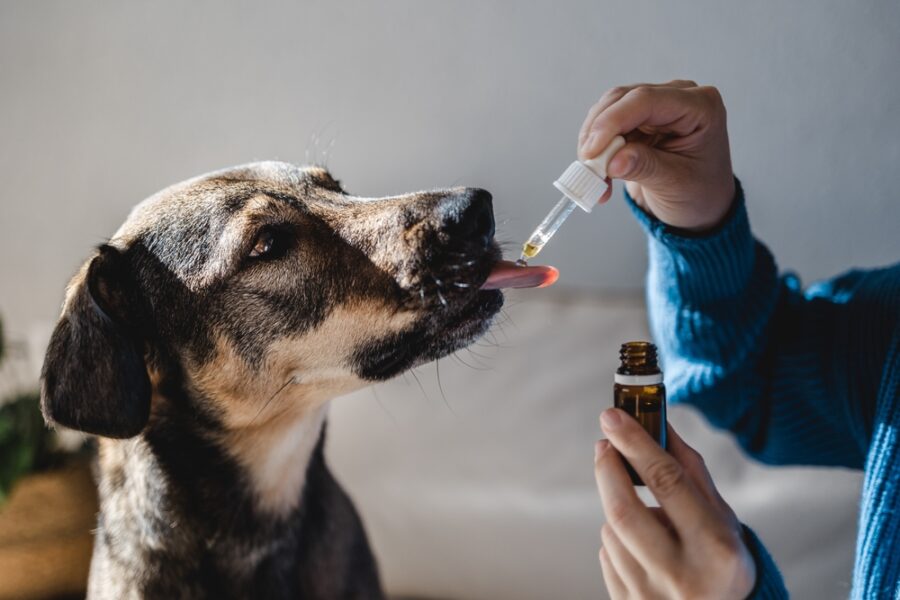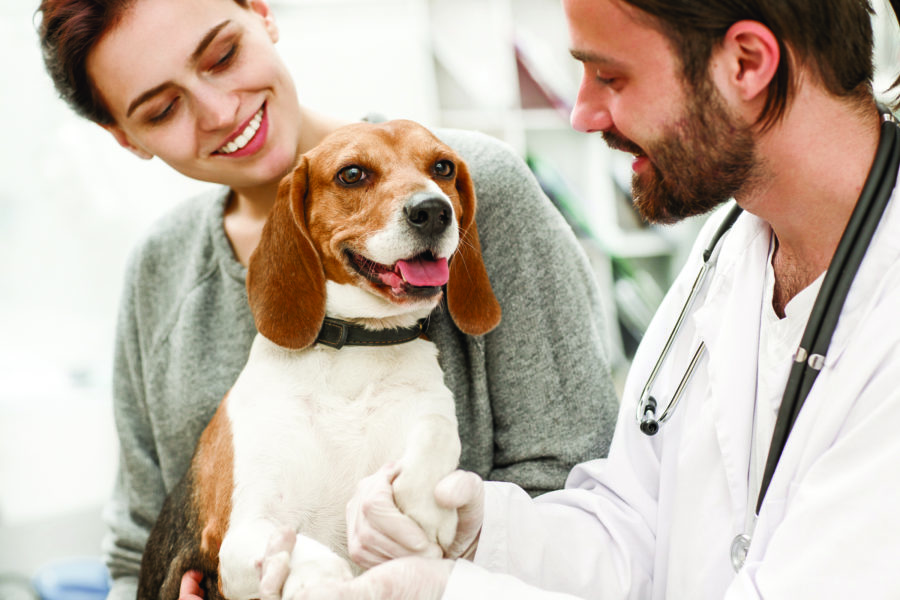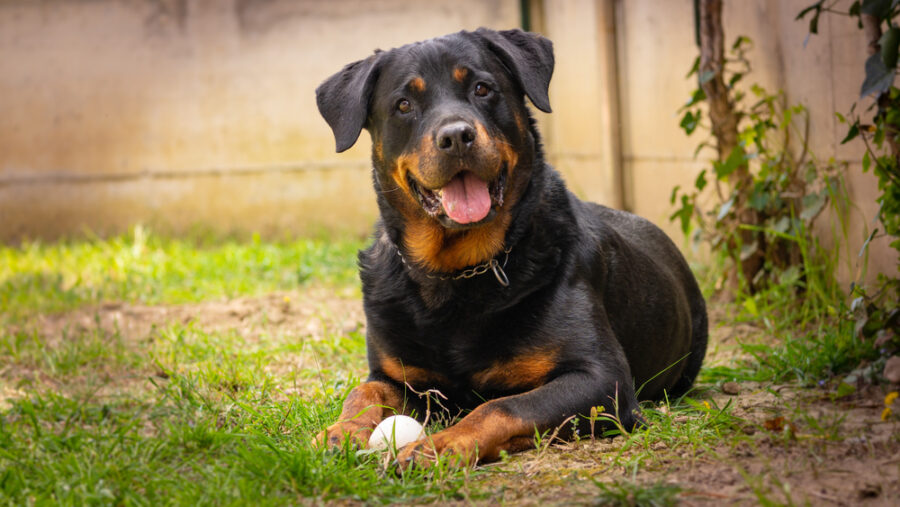The oral microbiome in dogs is incredibly complex and varied. It has a profound impact not only on dental health, but also on the rest of the dog’s GI system and overall well-being.
The mouth is the gateway to the whole immune system. A full 80% of the dog’s immune system comes from the gut, and the mouth is where it all starts. Specific to the oral cavity, non-shedding dental surfaces facilitate the development of highly complex polymicrobial biofilm communities, characterized not only by the distinct microbes comprising them, but by their cumulative activities. In this article, you will see that every section of the dog’s mouth has different colonies of bacteria and that the microbiome varies between these areas.
Learning to understand the oral microbiome
Since Antonie van Leeuwenhoek first discovered the existence of microbes in the 1700s, while analyzing dental plaque under a microscope, the composition of oral microbial communities has been extensively studied. But it wasn’t until we had DNA sequencing that we have begun to see and understand the more than 400 species even 700 species within the mouth cavity.
Adding to this complexity, the oral cavity faces near‐constant environmental challenges, including those from diet, salivary flow, masticatory forces, and the introduction of exogenous microbes. The composition of the oral microbiome is shaped throughout life by factors such as host genetics and maternal transmission, as well as environmental influences including dietary habits, oral hygiene practice, medications, and systemic factors.1
The microbiome biofilm of the mouth is what produces the tartar and plaque that form on a dog’s teeth. However, a balanced oral microbiome does not lead to the development of tartar, plaque and gingivitis. We are just learning about the different types of bacteria that live in a healthy mouth with balanced flora.
It is important that we respect the mouth as the initial inoculation to the bodies microbiome. When the mouth is exposed to chemicals and toxins, many of those microbes do not get to flow downstream into the rest of the immune system.
How dental care affects the microbiome
Dental care is important for canine patients. But if the mouth has a balanced biofilm, the need for dental scaling and interventions is tremendously reduced. Clinical trials have indicated that the oral microbiota is associated with dental caries and periodontitis.2 When standard of care dentistry is done, involving cleaning or extraction, the recommendation is to put the dog on an antibiotic such as clindamycin. This is a misuse of antimicrobials. Clindamycin can destroy the microbiome for a year, and you may never get it back. While this antibiotic may effectively treat recurrent strep infections, its detrimental effects on the gut microbiome can result in the colonization of pathogenic bacteria such as Clostridium difficile.3 A study in Western diet-fed mice showed that antibacterial mouthwash alters the gut microbiome, reducing nutrient absorption and fat accumulation.5
In my 47 years of practice, I have never had a referral or looked at lab work from a pre- and post-dental that has cultured out every aspect of the mouth. Not only should you validate a culture from each pocket and every area around the tooth, but the information coming from that culture is almost insignificant. That’s because there are over 400 species in the mouth flora, but we can culture only 12 or 100 at the most. We still do not know what is growing in the mouth, so placing an animal on an antibiotic seems like the creation of accepted antimicrobial resistance.
Alternatives to antibiotics in canine dentistry
There’s very little need to use antibiotics when you’re working in dentistry. The use of medical ozone to flush the pockets and the gums, while also using it in the Cavitron water, is adequate to help prevent infection. Medical ozone has been used by the biological dentist. I have studied with for the last 20 years. Additional days of applying ozonated water or ozonated saline to the mouth as a flush, or ozonated olive or coconut oil rub can also help prevent infection. Medical ozone not only kills the biofilm in the mouth but floods the gum tissue with oxygen within the mitochondria of the cells’ nuclei.4 This increases the health of the gingiva and removes the more inflammatory biofilm.
The microbiome of dogs that have never had tartar or plaque, nor any gingivitis or tooth loss, should be of interest. My own dogs, who have been fecal donors for the Touch of Life for Microbiome Restorative Therapy since 2012, have never had tartar, plaque or gingivitis, and have never lost any teeth. These dogs have been donors, but have been my seven generations since 1996. Their diet is very clean with all organic fresh food made for them as well as they live in a house that’s green and Sustainable and he’s been built on 7 acres of Virgin Woods. They eat raw bone from wild deer with an otherwise predominantly plant-based diet. I have never brushed their teeth. Their gums and teeth look like those of two and three-year-old dogs instead of 12 and 14-year-old dogs. In my practice, I see animals coming in with rotted teeth for so many years, and we look at the quality of what they eat and the water that they drink, and understand that this is due to a dysbiosis of the mouth.
We have found that if we are able to inoculate the biofilm from our donor dogs’ water bowls into the water bowls of other dogs, the latter start to break down their tartar. We use medical ozone oil to disrupt the biofilm, then add the bacteria/water from our dogs’ water bowls, which then spread through the recipients’ water and forms a biofilm in the bowl of the more balanced microbial population. Hence, they break down the tartar and plaque and do not reform new tartar. If the biofilm of the mouth is damaged through return of chemicals and toxins to the oral microbiome, then we may not be able to retain the balance.

Summary
The average phylogenetic distribution of operational taxonomic units across canine oral niches (see sidebar) provides a comprehensive view of the microbial diversity in the mouth. The insights gained from this analysis underscore the complexity and specialization of bacterial communities in the canine oral cavity, highlighting the importance of these microorganisms in oral health and disease. We should also look at this seriously when we do dental hygiene for animals. We should decide not to use anti-microbials and antibiotics that destroy the biodiversity of the gut and the rest of the oral cavity. Responsible doctors should not prescribe antibiotics for dentals and even extractions as there are other options to do good hygiene in ways to stop infection without disrupting the gut flora.


___________________________________________________________
1Lea Sedghi, Vincent DiMassa, Anthony Harrington, Susan V. Lynch, Yvonne L. Kapila. The oral microbiome: role of key organisms and complex networks in oral health and disease. Periodontol 2000. 2021 Oct; 87(1): 107–131. Published online 2021 Aug 31. doi: 10.1111/prd.12393. PMCID: PMC8457218, PMID: 34463991.
2Yan Li, Jinzhi He, Zhili He, Yuan Zhou, Mengting Yuan, Xin Xu, Feifei Sun, Chengcheng Liu, Jiyao Li, Wenbo Xie, Ye Deng, Yujia Qin, Joy D VanNostrand, Liying Xiao, Liyou Wu, Jizhong Zhou, Wenyuan Shi, Xuedong Zhou. Phylogenetic and functional gene structure shifts of the oral microbiomes in periodontitis patients, The ISME Journal, Volume 8, Issue 9, September 2014, Pages 1879–1891, https://doi.org/10.1038/ismej.2014.28.
3Patrick B. Murphy, Karlyle G. Bistas, Preeti Patel, Jacqueline K. Le. Clindamycin. https://www.ncbi.nlm.nih.gov/books/NBK519574/. Last update February 28, 2024.
4Lucas Rannier Ribeiro Antonino Carvalho, Ariela M. Boeder, Miho Shimari, Andrei L. Kleschyov, Anders Esberg, Ingegerd Johansson, Eddie Weitzberg, Jon O. Lundberg, Mattias Carlstrom. Anti-microbial efficiency of gaseous ozone’s combined use with fluoride and chlorhexidine on time-related oral biofilm: an in situ study on pediatric patients. Med Gas Res. 2023 Oct-Dec; 13(4): 192–197. Published online 2023 Apr 15. doi: 10.4103/2045-9912.372820. PMCID: PMC10226696, PMID: 37077117.
5Burcu Namazoğlu, Merve Aksoy, Betül Memiş-Özgül, Firdevs Tulga-Öz. Antibacterial mouthwash alters gut microbiome, reducing nutrient absorption and fat accumulation in Western diet-fed mice.
6 I. Johansson, E. Witkowska, ACR. Tanner. The Microbiome in Populations with a Low and High Prevalence of Caries. First published online October 6, 2015. https://doi.org/10.1177/0022034515609554.
7Schmidt BL, et al. Changes in abundance of oral microbiota associated with oral cancer. PLoS ONE 9, e98741 (2014).
8Sameera G Nath, Ranjith Raveendran. Microbial dysbiosis in periodontitis. Journal of Indian Society Periodontology, 2013 Jul-Aug;17(4):543–545. doi: 10.4103/0972-124X.118334. PMCID: PMC3800425, PMID: 24174742.
9Freida Blostein, Deesha Bhaumik, Elyse Davis, Elizabeth Salzman, Kerby Shedden, Melissa Duhaime, Kelly M. Bakulski, Daniel W. McNeil, Mary L. Marazita, Betsy Foxman. Evaluating the ecological hypothesis: early life salivary microbiome assembly predicts dental caries in a longitudinal case-control study. Microbiome, Volume 10, Article number: 240 (2022).








